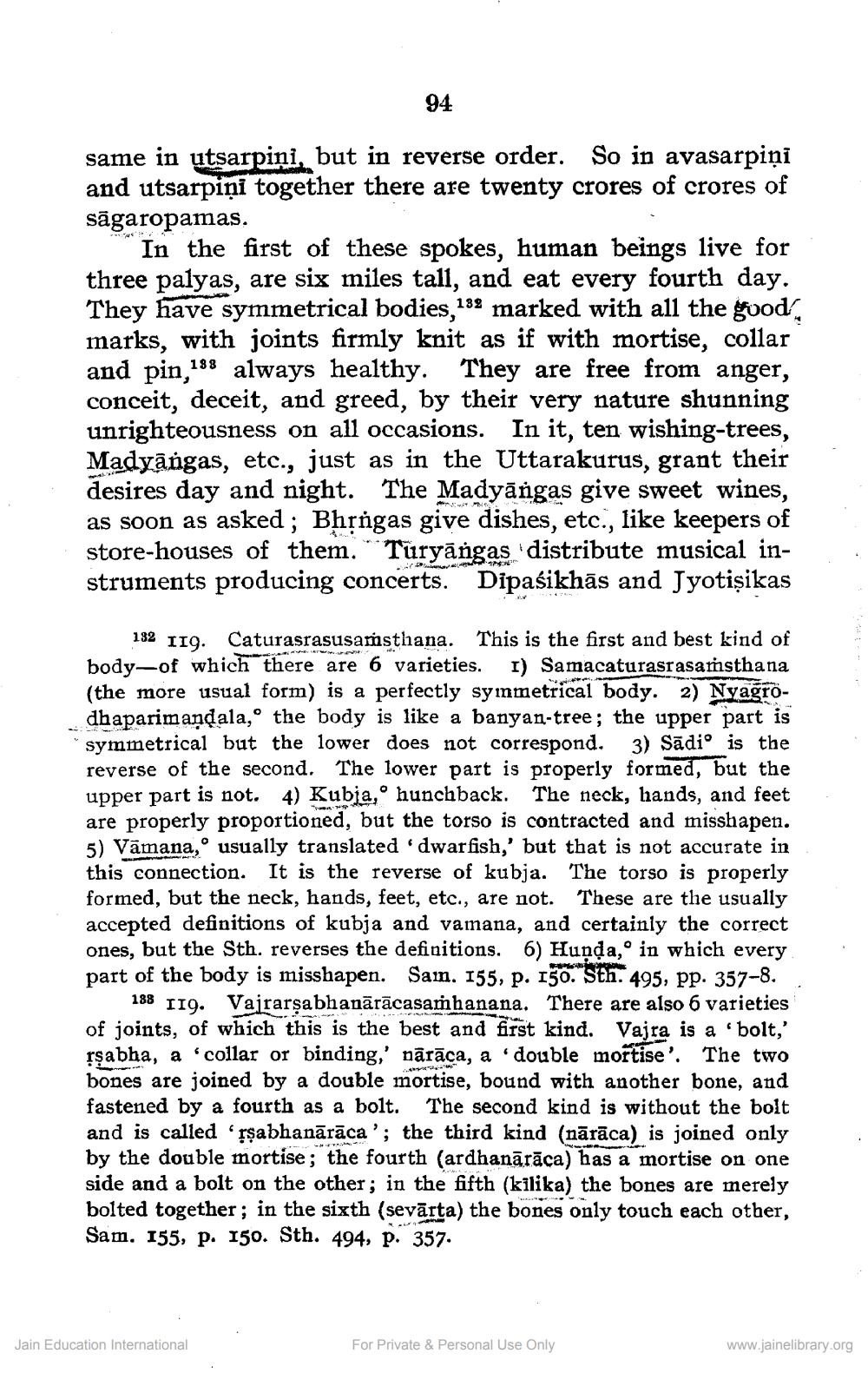________________
94
same in utsarpini, but in reverse order. So in avasarpiņi and utsarpiņi together there are twenty crores of crores of sāgaropamas.
In the first of these spokes, human beings live for three palyas, are six miles tall, and eat every fourth day. They have symmetrical bodies, 139 marked with all the good marks, with joints firmly knit as if with mortise, collar and pin, 188 always healthy. They are free from anger, conceit, deceit, and greed, by their very nature shunning unrighteousness on all occasions. In it, ten wishing-trees, Madyāngas, etc., just as in the Uttarakurus, grant their desires day and night. The Madyāngas give sweet wines, as soon as asked ; Bhľngas give dishes, etc., like keepers of store-houses of them. Turyāngas distribute musical instruments producing concerts. Dipaśikhās and Jyotişikas
182 119. Caturasrasusamsthana. This is the first and best kind of body-of which there are 6 varieties. I) Samacaturasrasarnsthana (the more usual form) is a perfectly symmetrical body. 2) Nyagrodhaparimandala," the body is like a banyan-tree; the upper part is symmetrical but the lower does not correspond. 3) Sādio is the reverse of the second. The lower part is properly formed, but the upper part is not. 4) Kubja, hunchback. The neck, hands, and feet are properly proportioned, but the torso is contracted and misshapen. 5) Vāmana,usually translated dwarfish,' but that is not accurate in this connection. It is the reverse of kubja. The torso is properly formed, but the neck, hands, feet, etc., are not. These are the usually accepted definitions of kubja and vamana, and certainly the correct ones, but the Sth. reverses the definitions. 6) Hunda,° in which every part of the body is misshapen. Sain. 155, p. 150. Sth. 495, pp. 357-8.
188 119. Vajrarsabhanārācasamhanana. There are also 6 varieties of joints, of which this is the best and first kind. Vajra is a bolt,' rsabha, a 'collar or binding,' nārāca, a double mortise'. The two bones are joined by a double mortise, bound with another bone, and fastened by a fourth as a bolt. The second kind is without the bolt and is called rşabhanārāca'; the third kind (nārāca) is joined only by the double mortise; the fourth (ardhanārāca) has a mortise on one side and a bolt on the other; in the fifth (kilika) the bones are merely bolted together; in the sixth (sevārta) the bones only touch each other, Sam. 155, p. 150. Sth. 494, p. 357.
Jain Education International
For Private & Personal Use Only
www.jainelibrary.org




